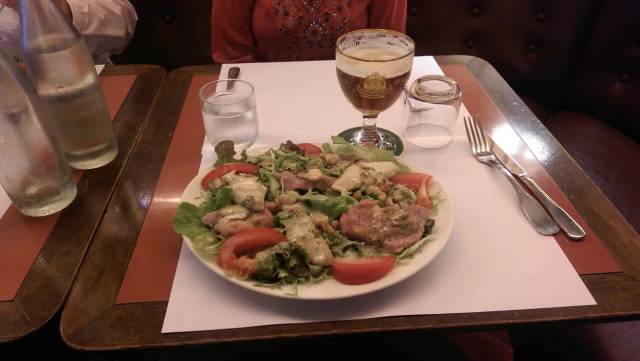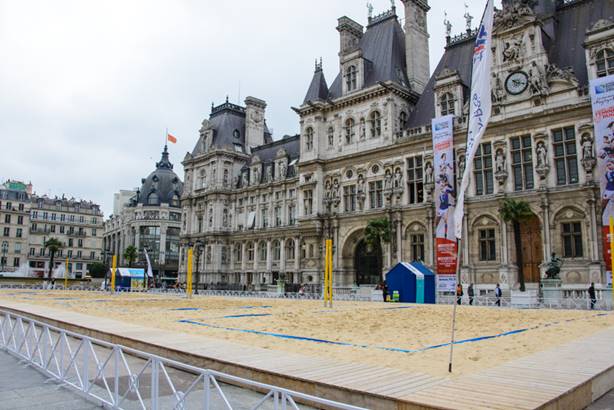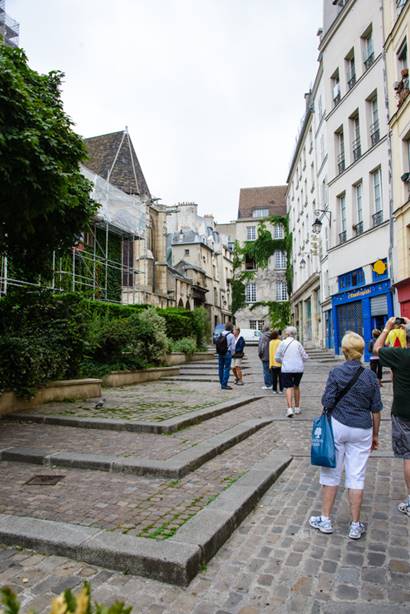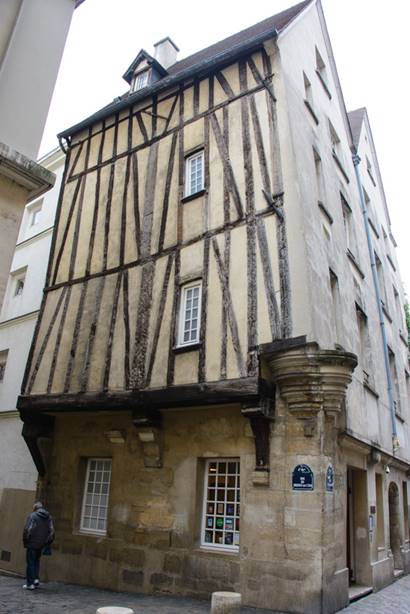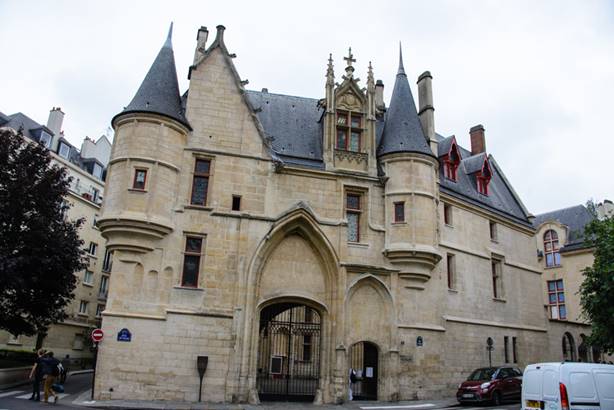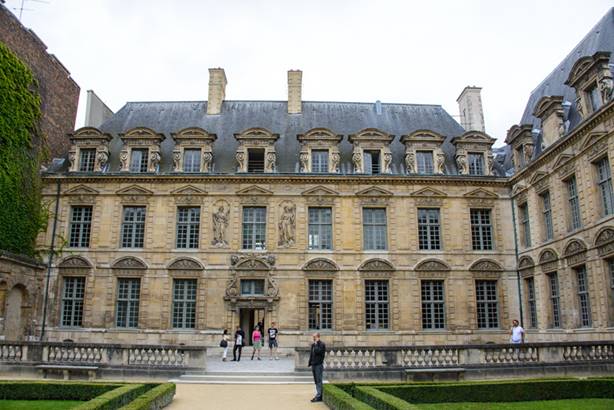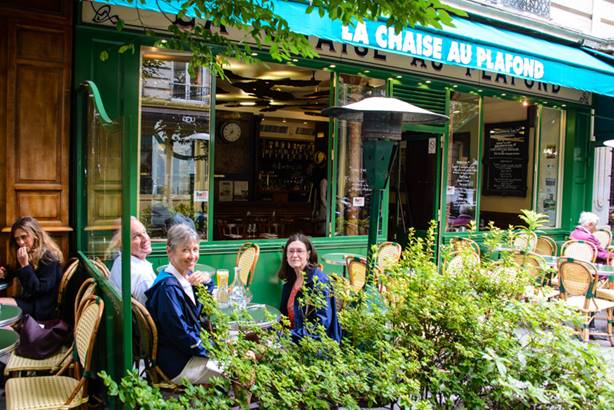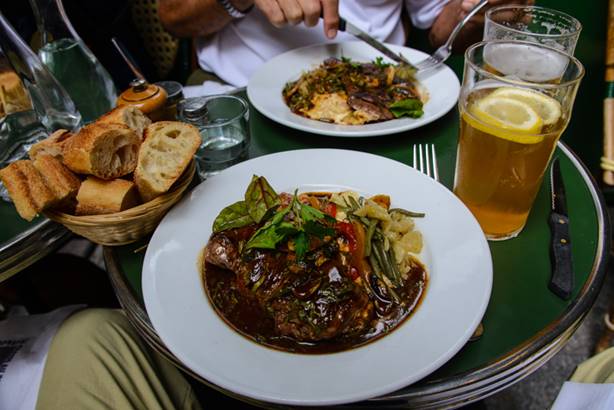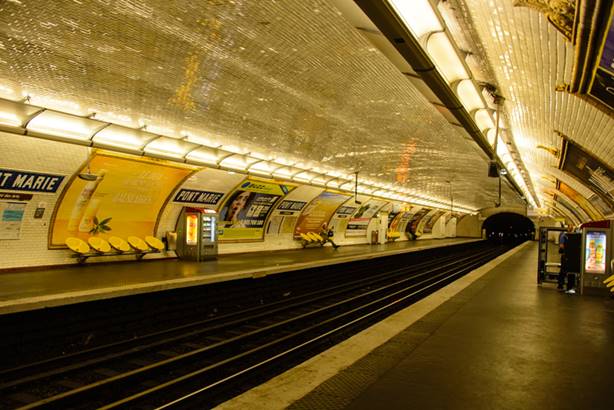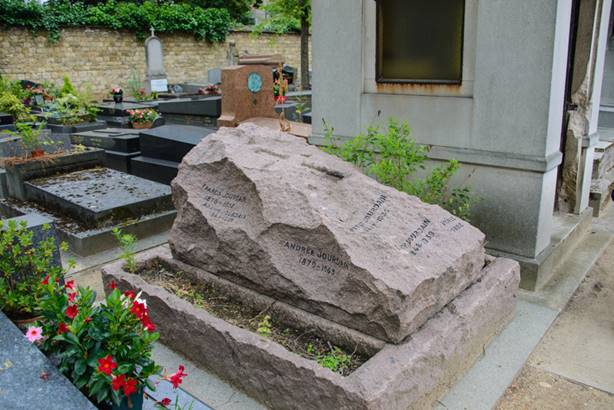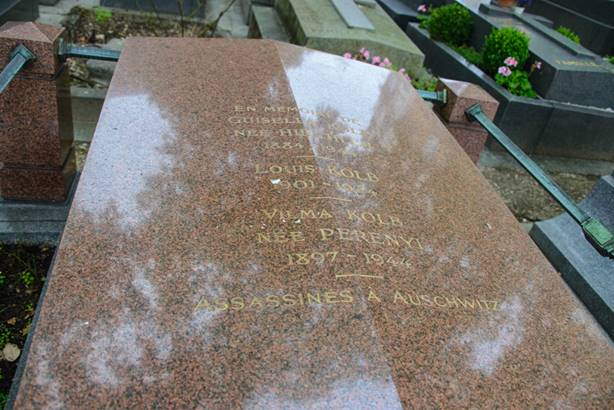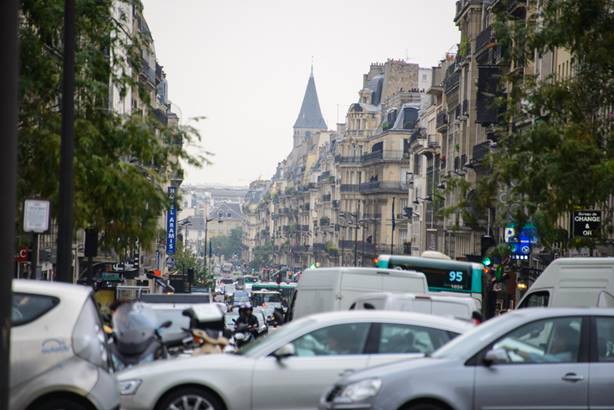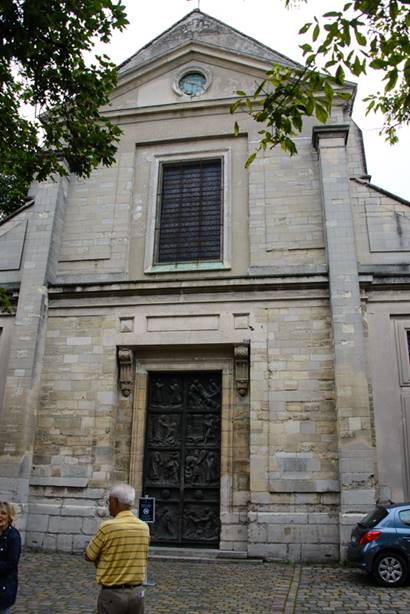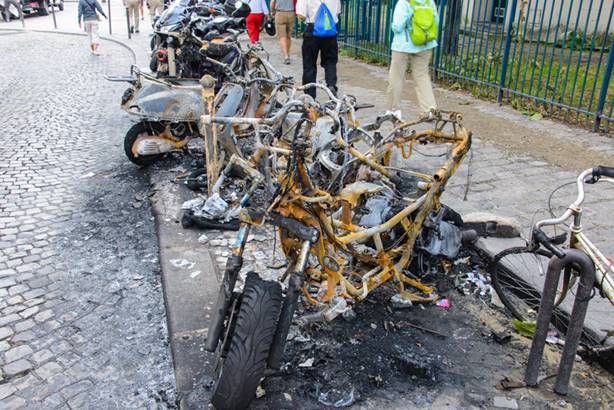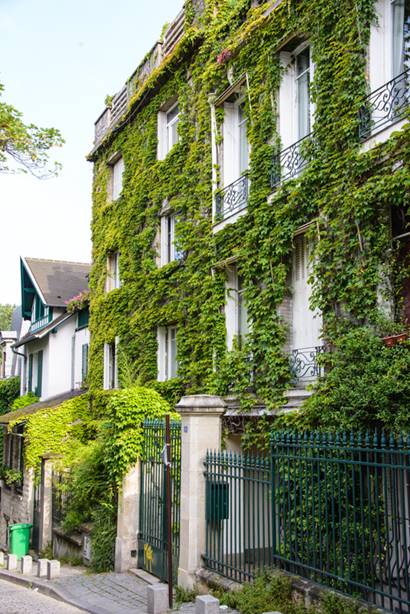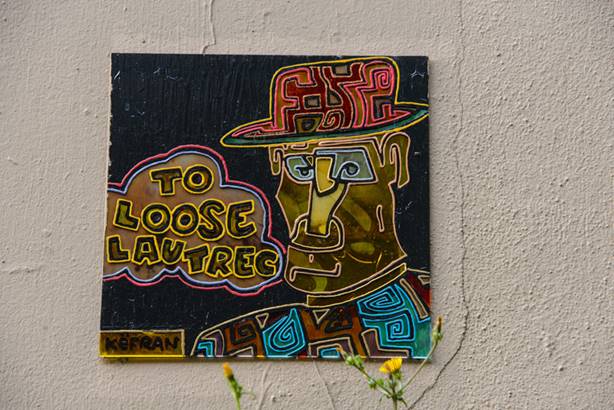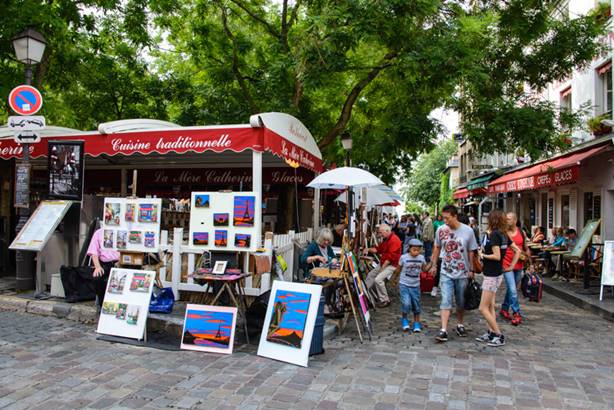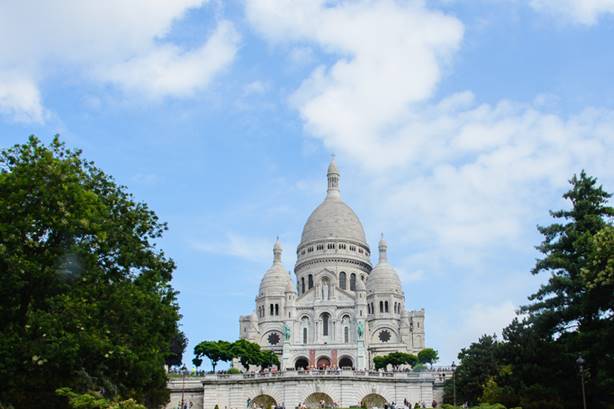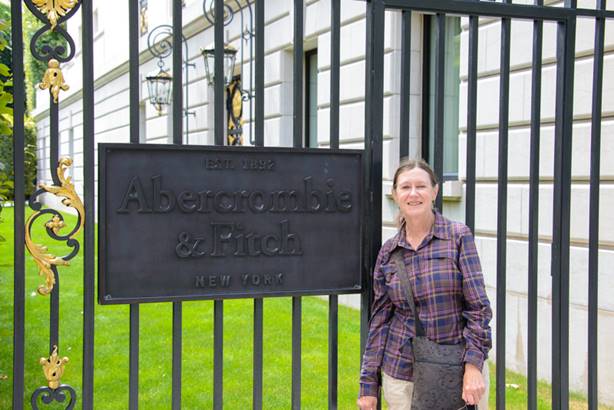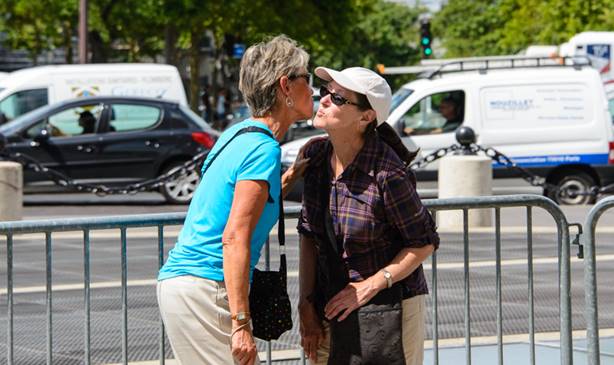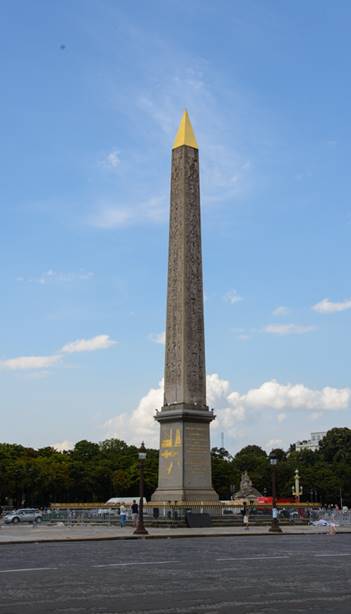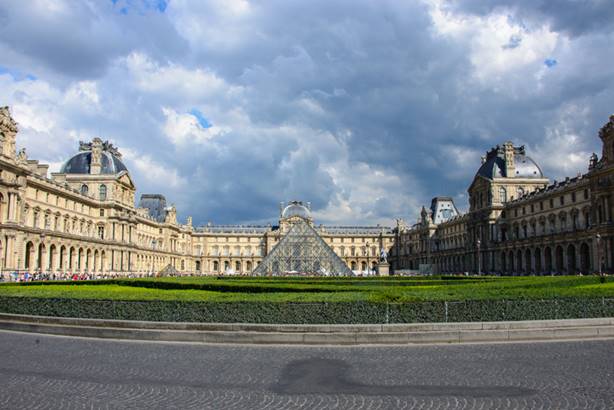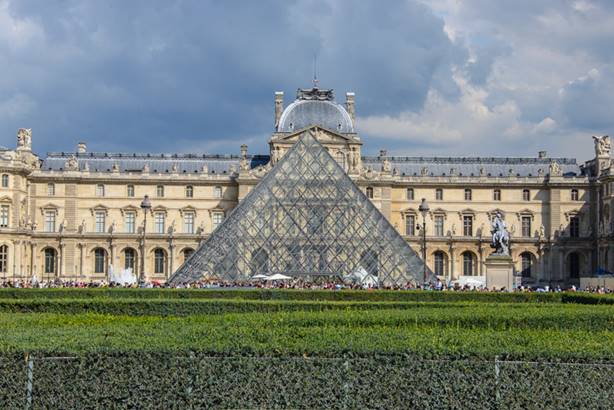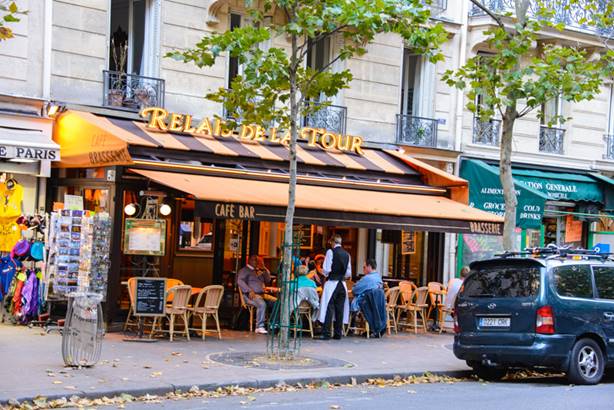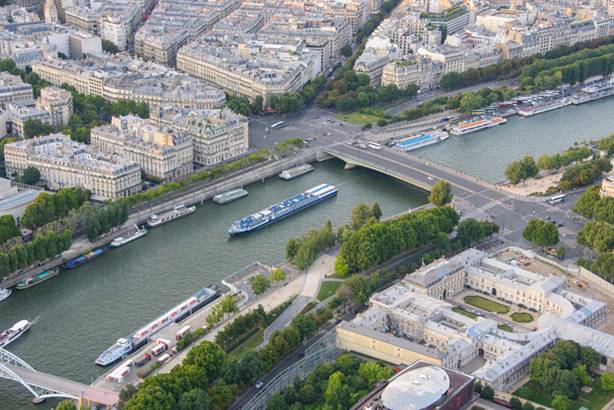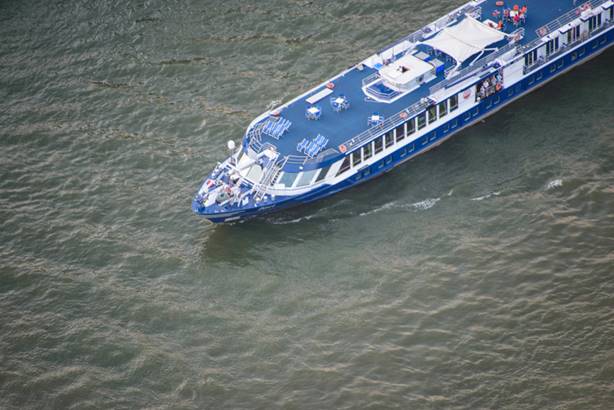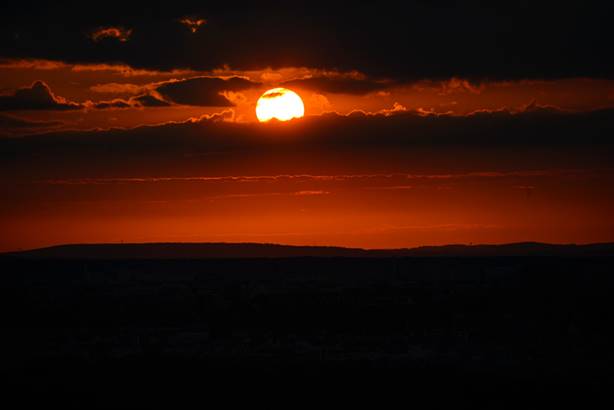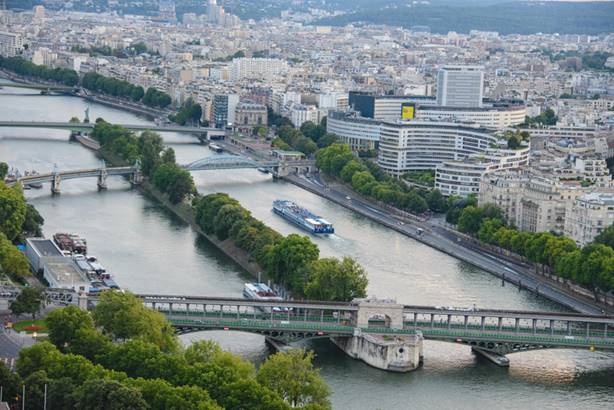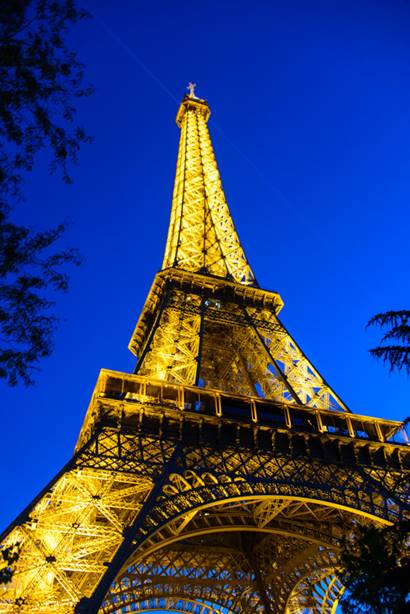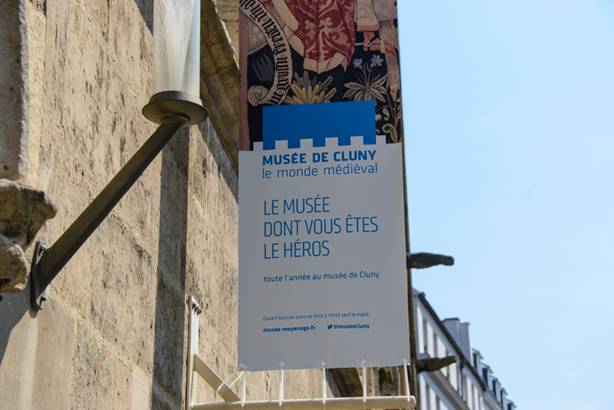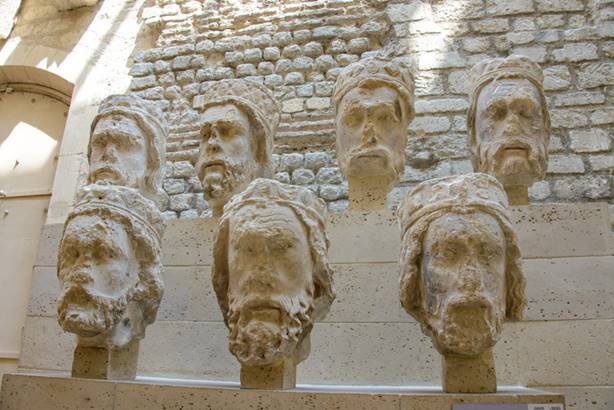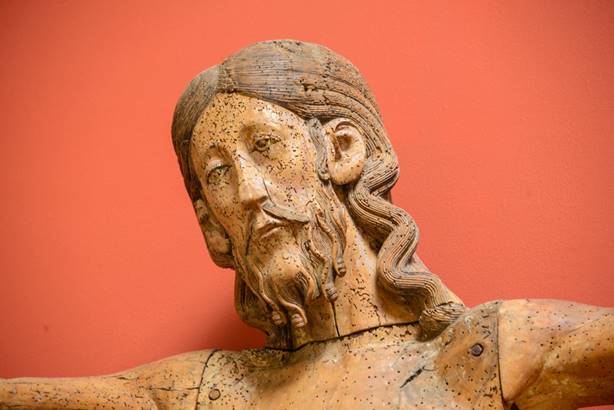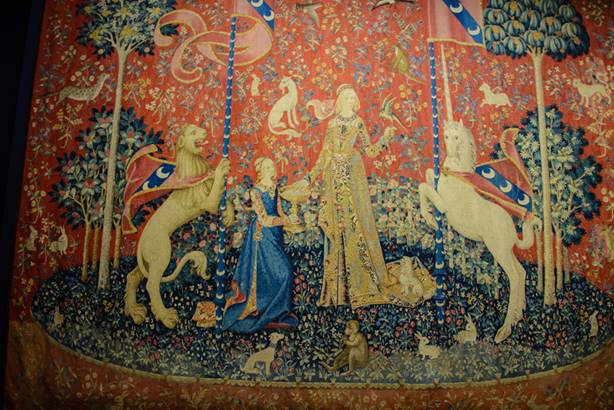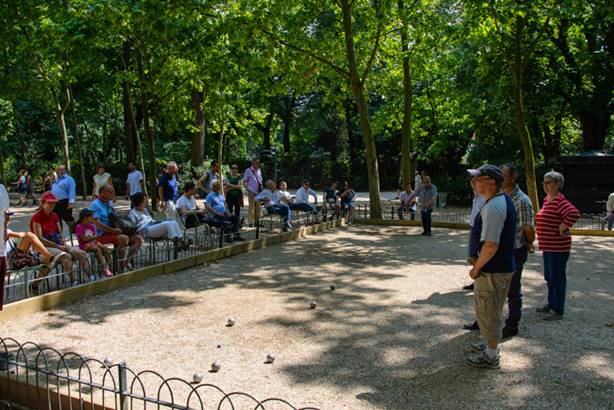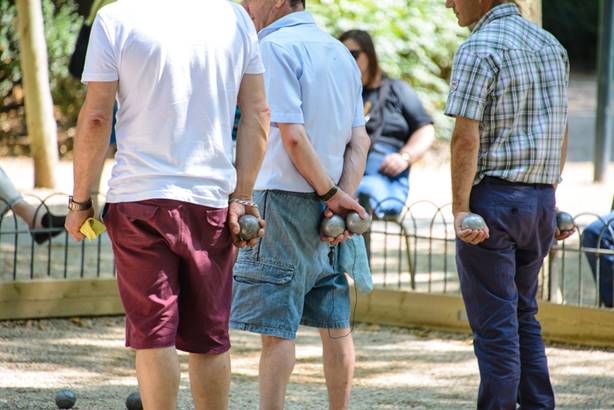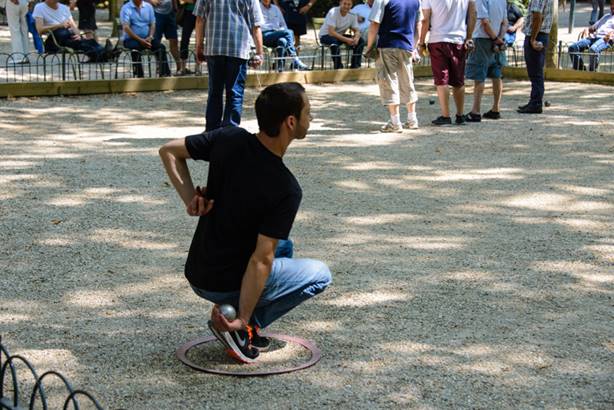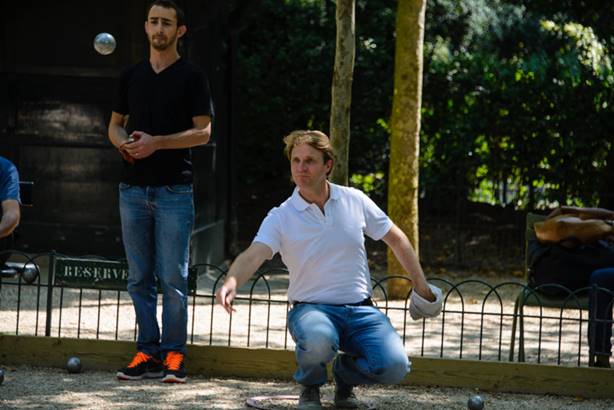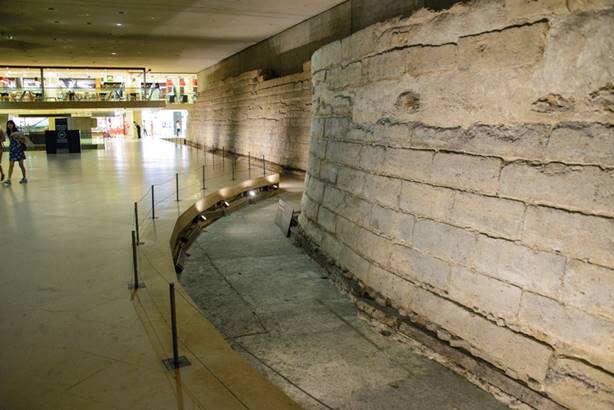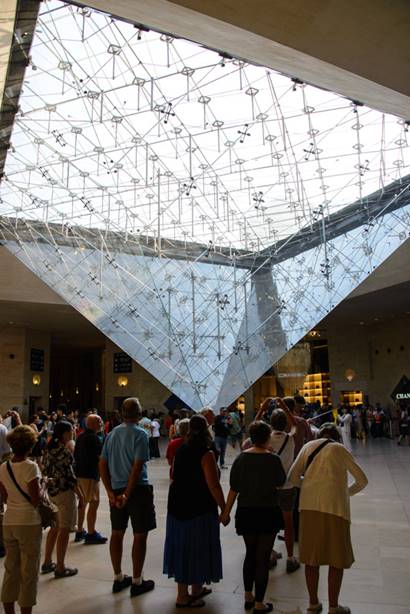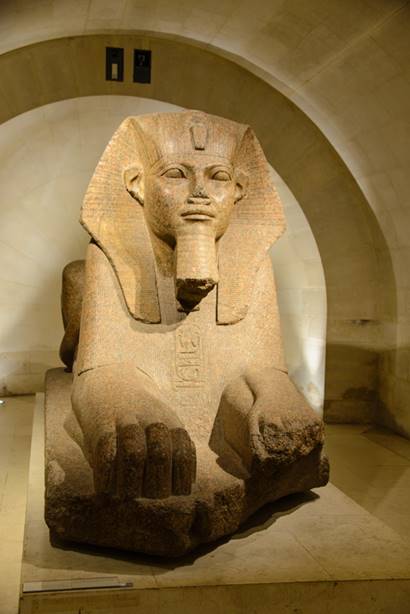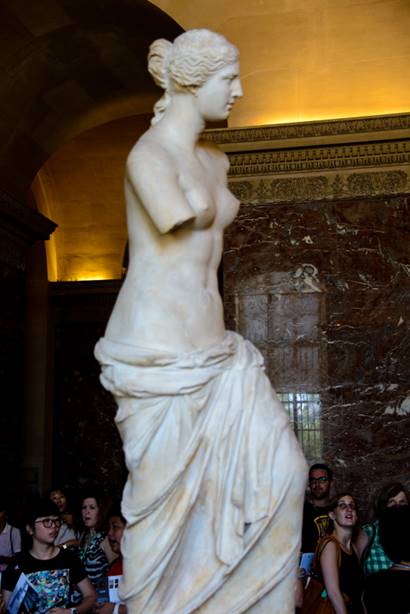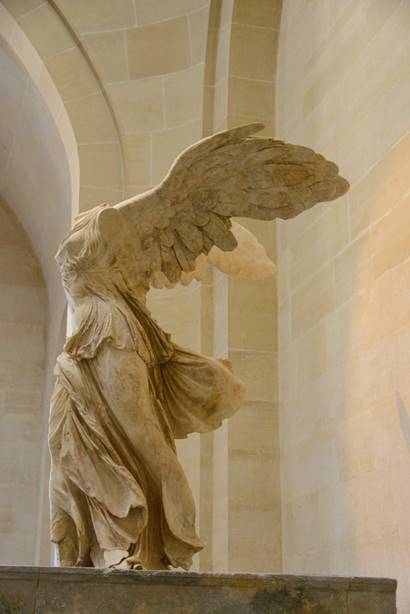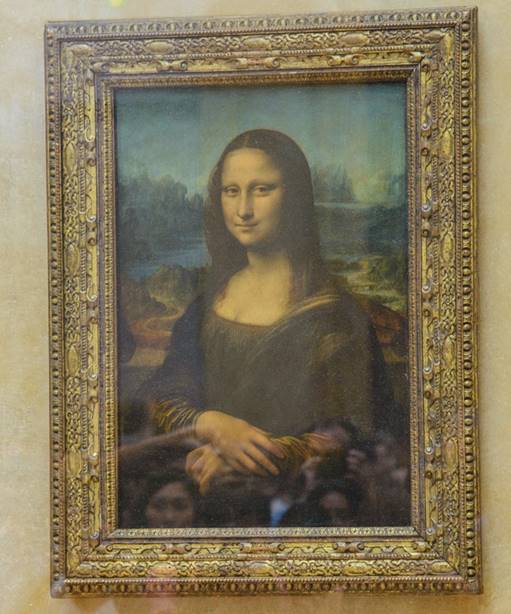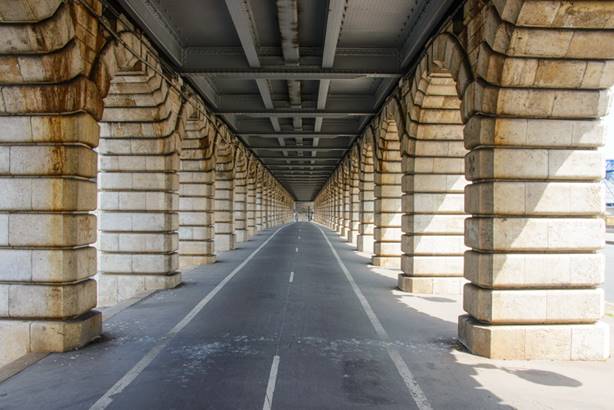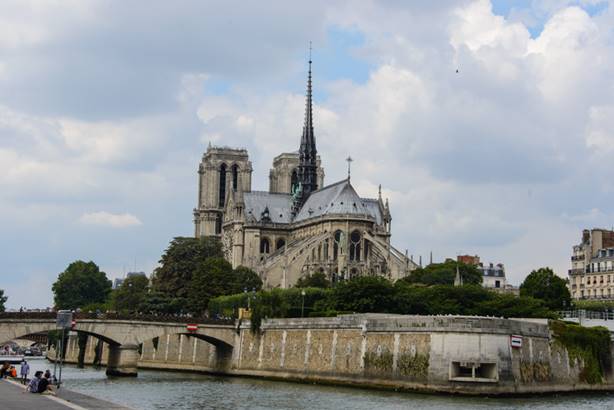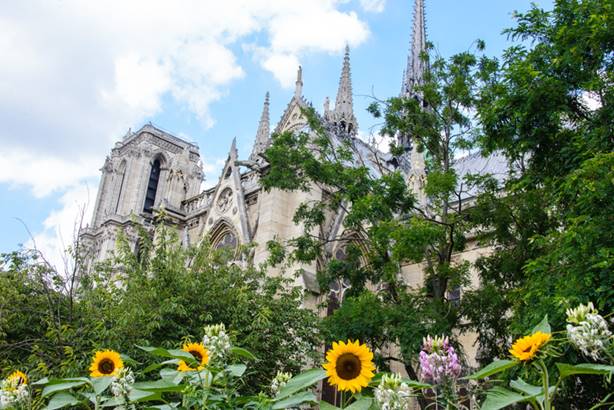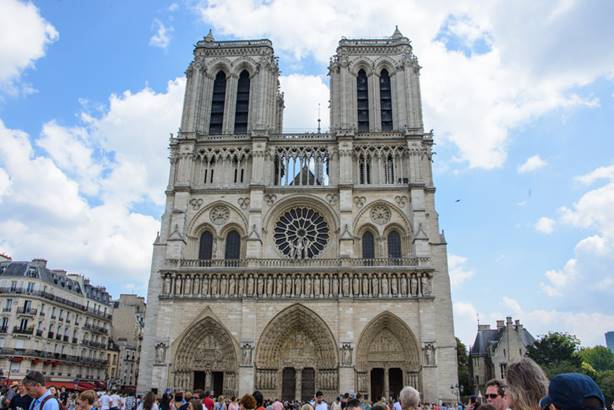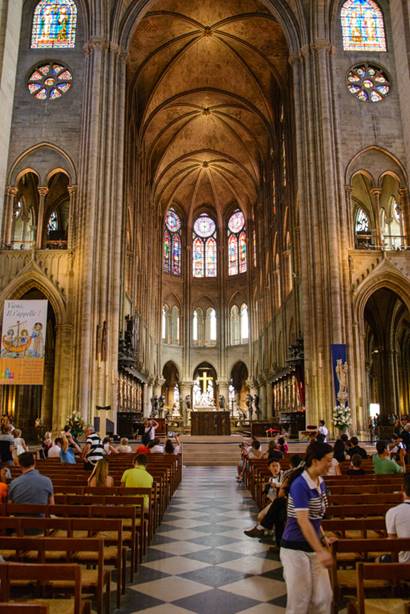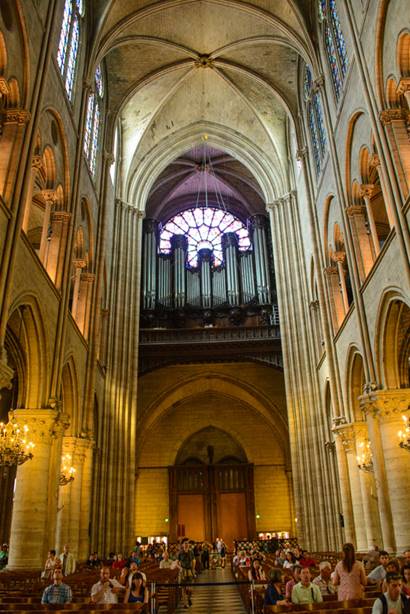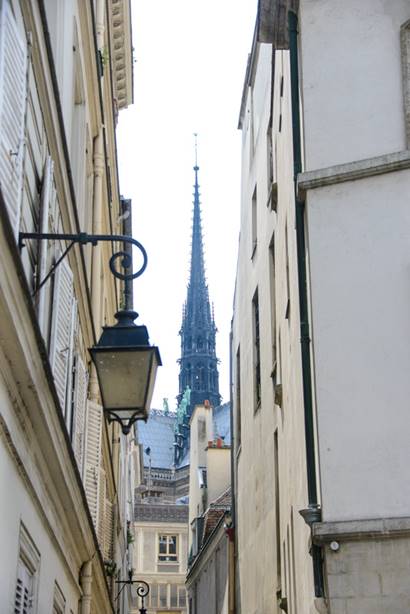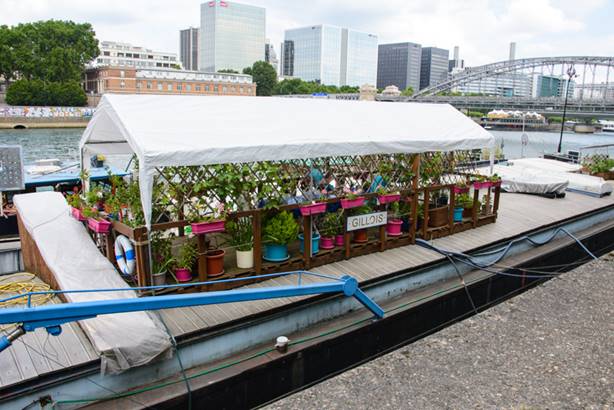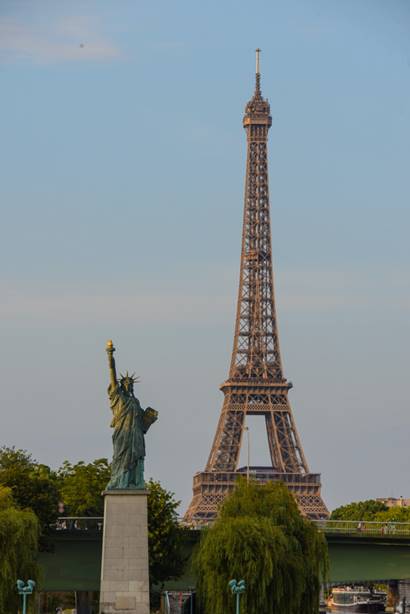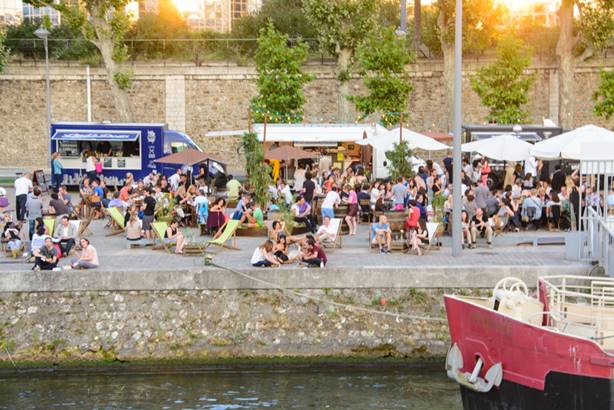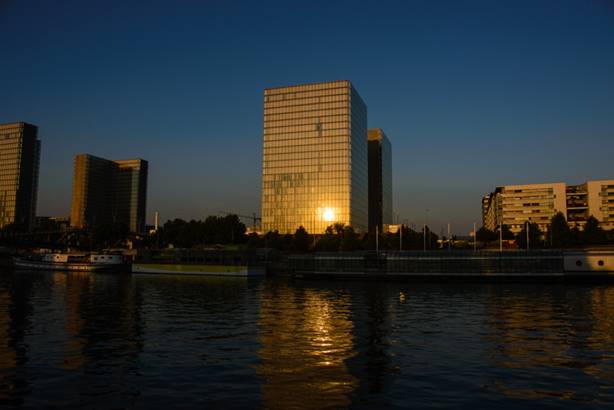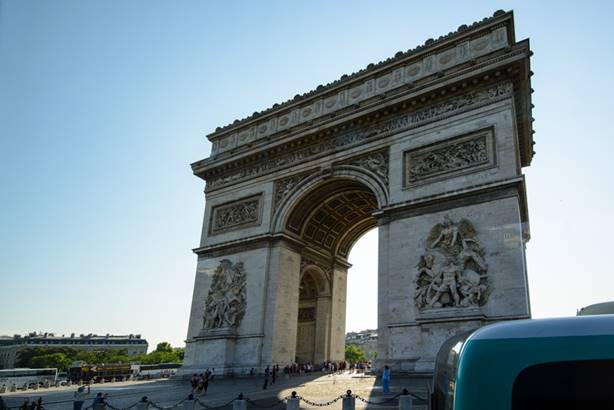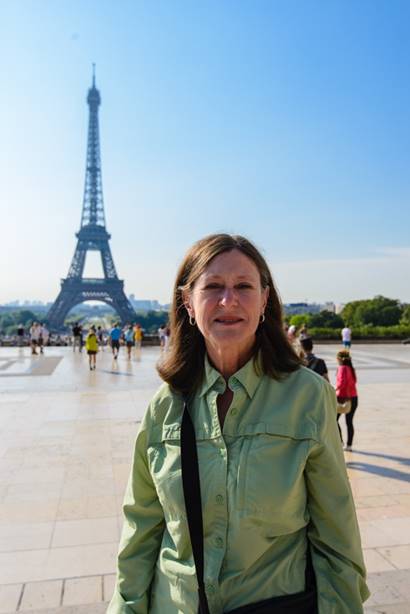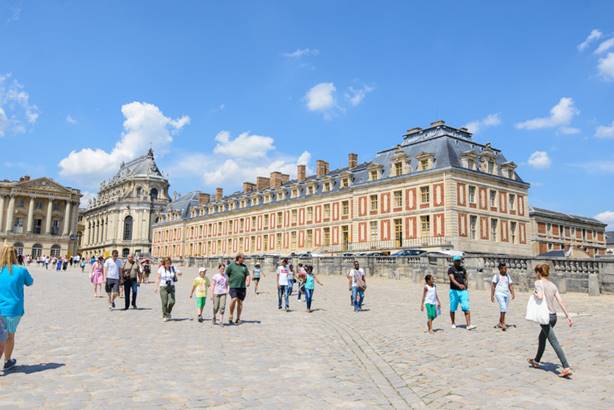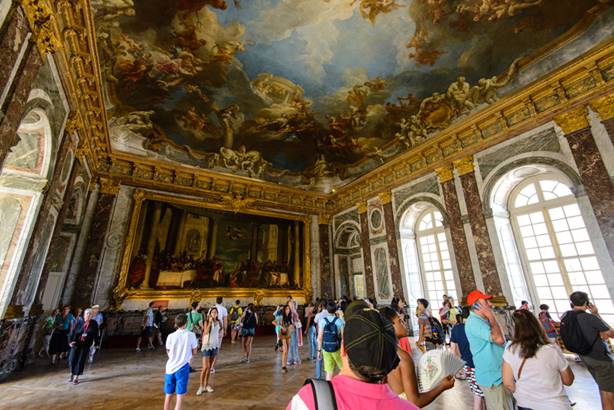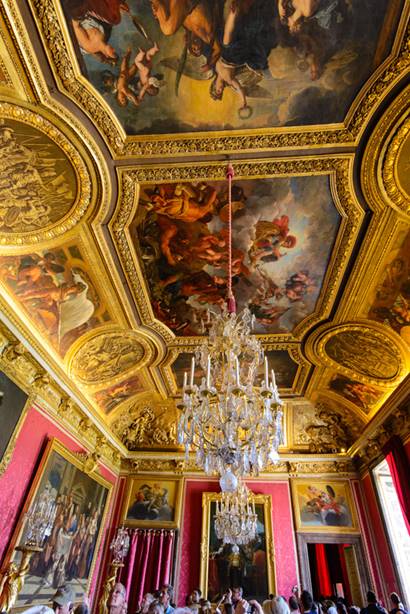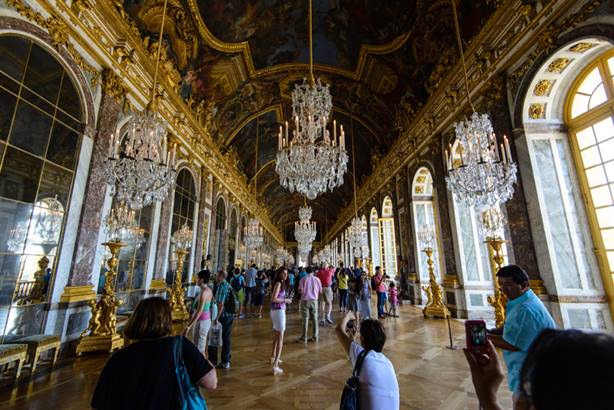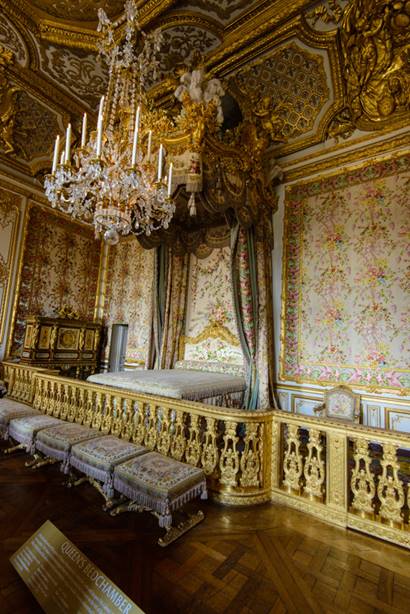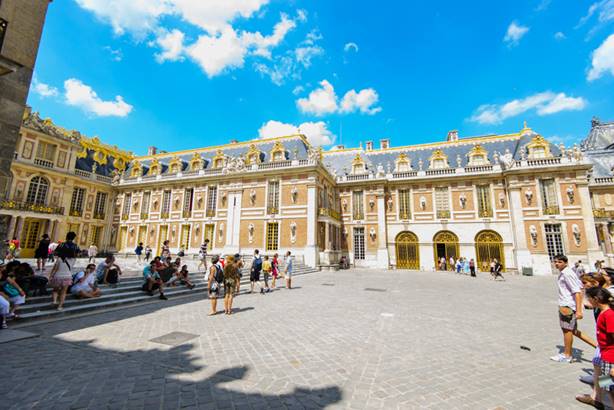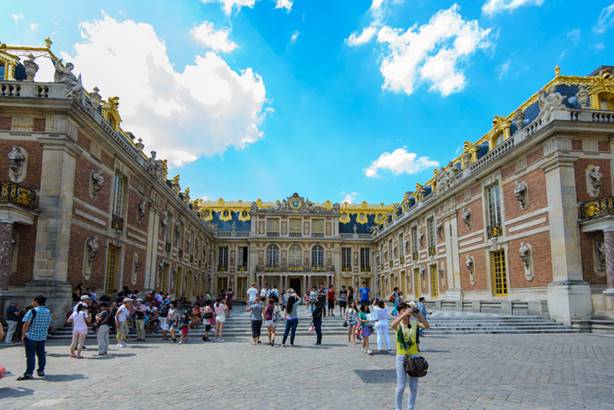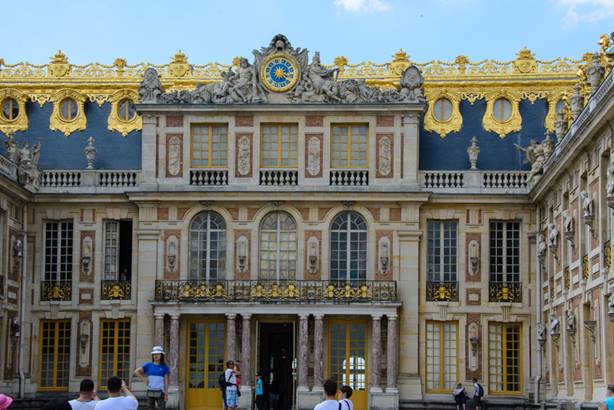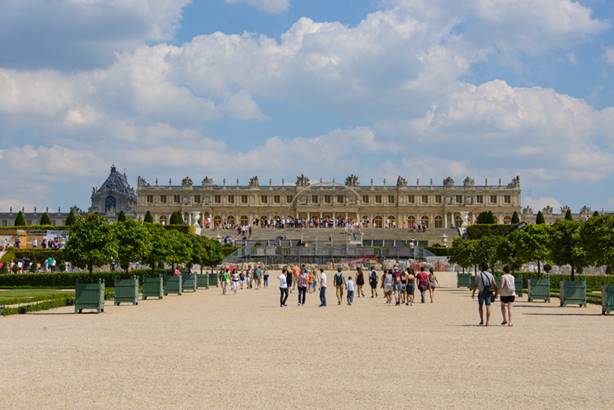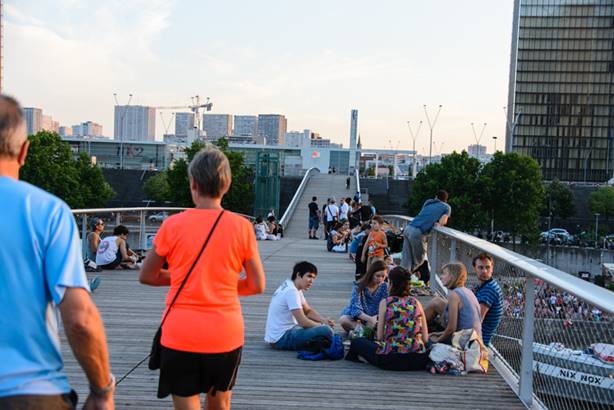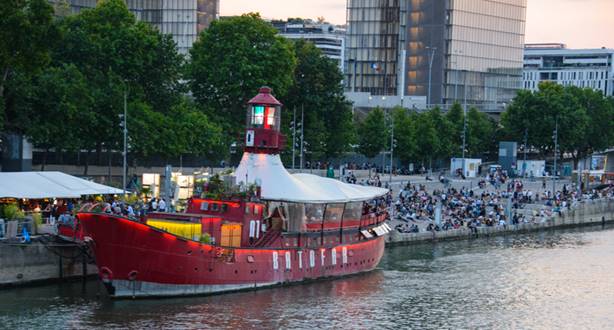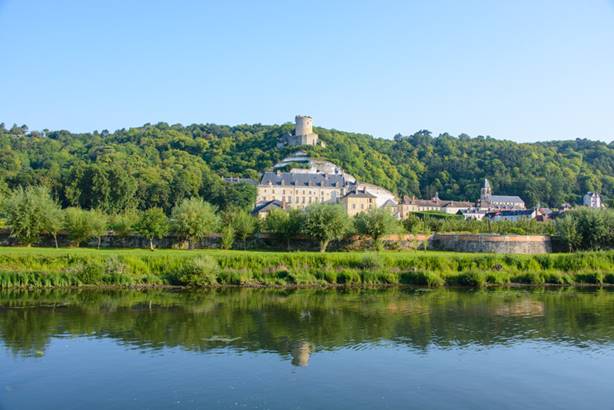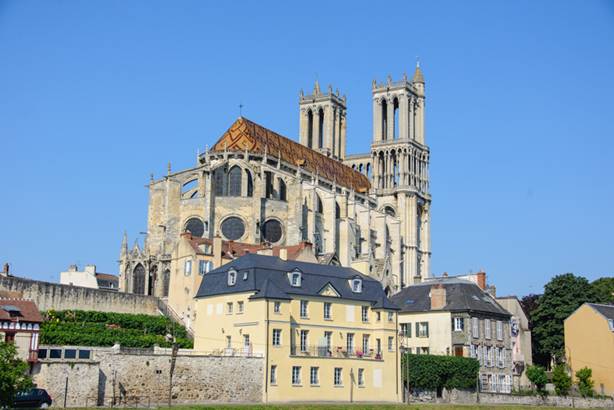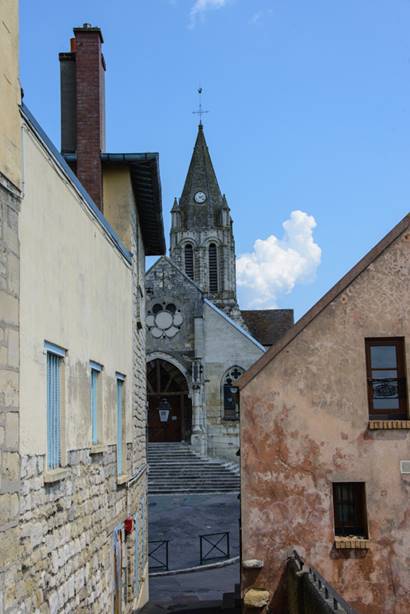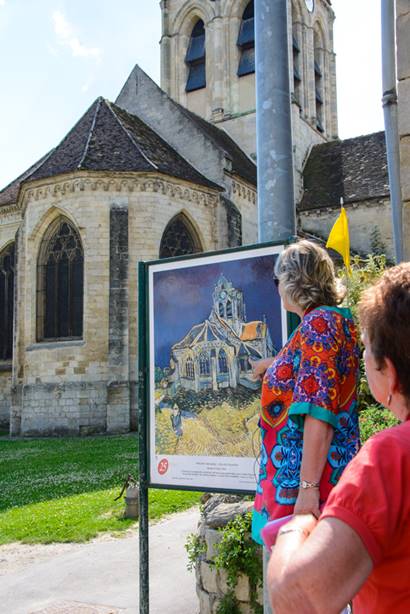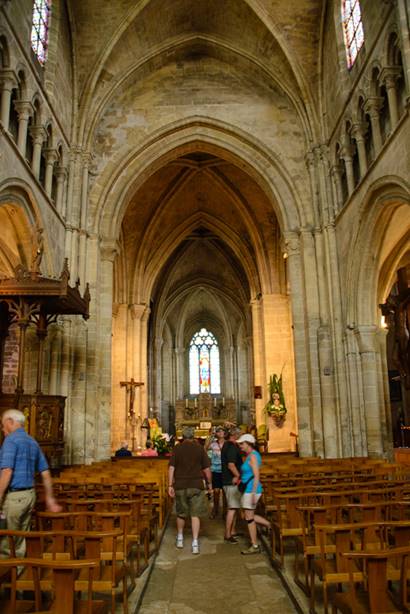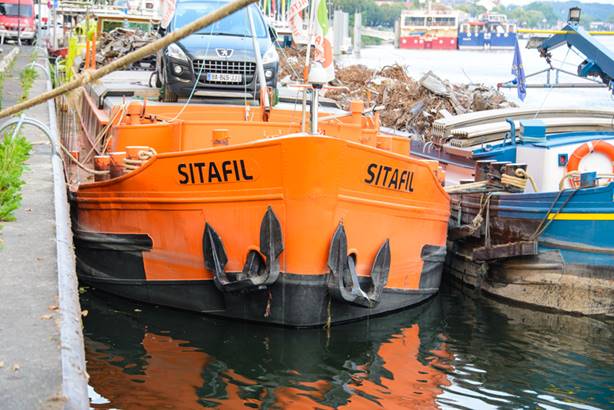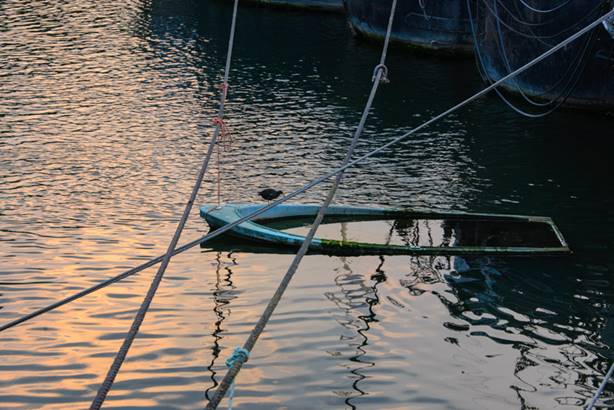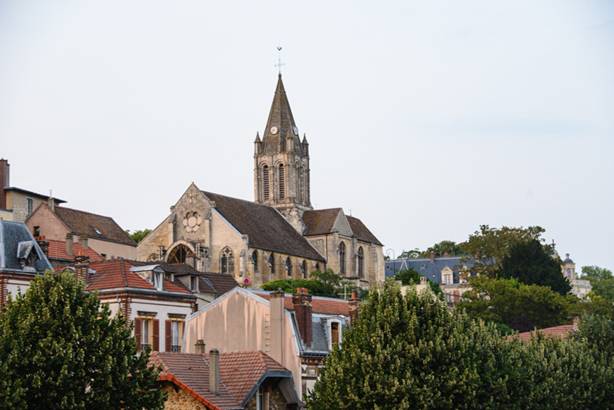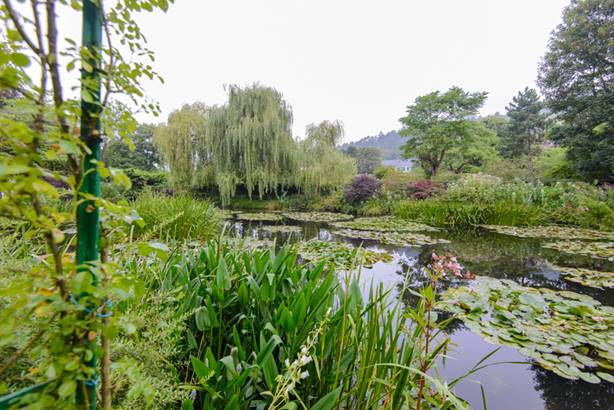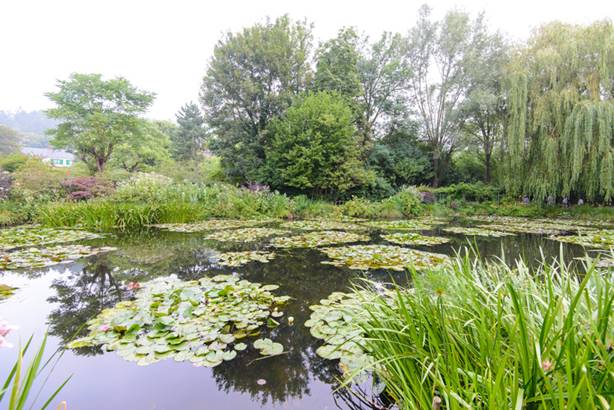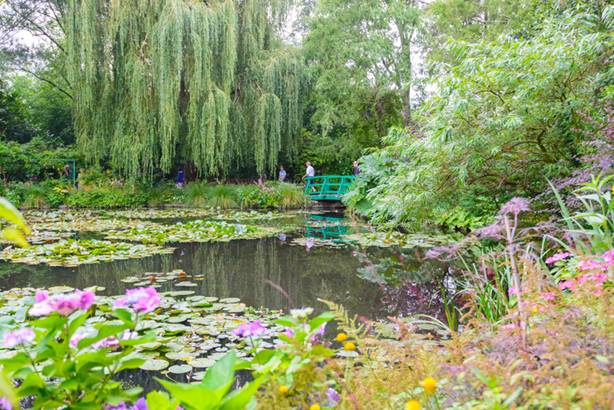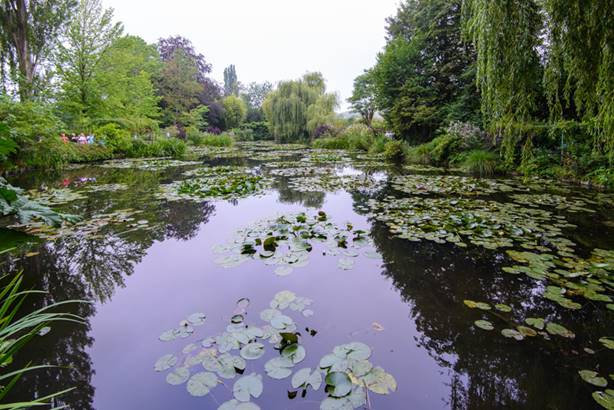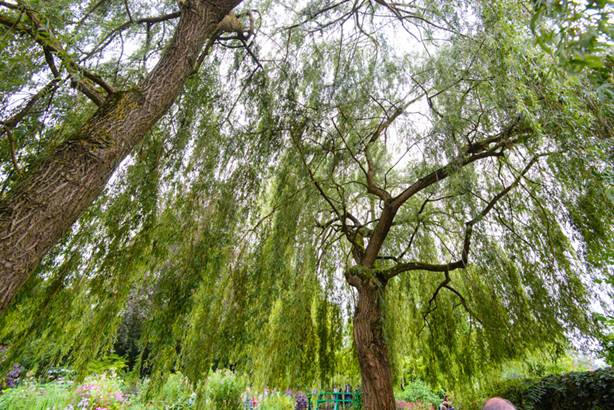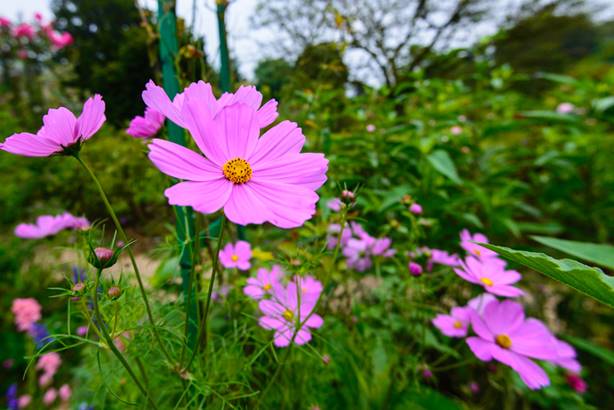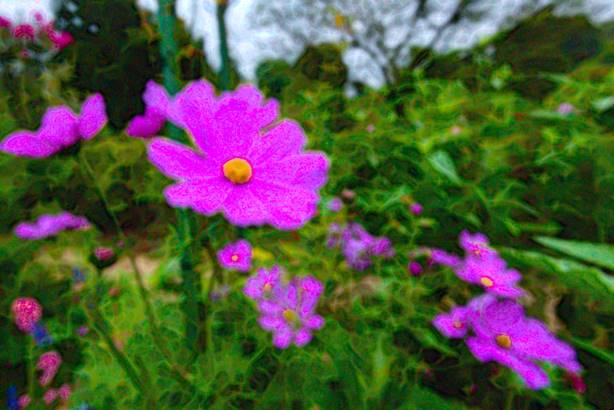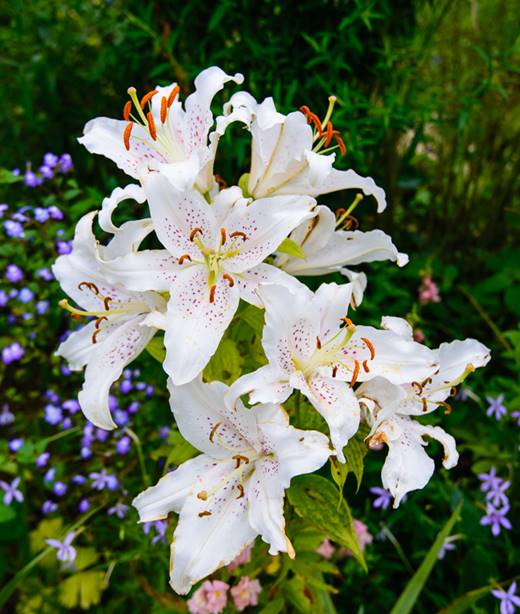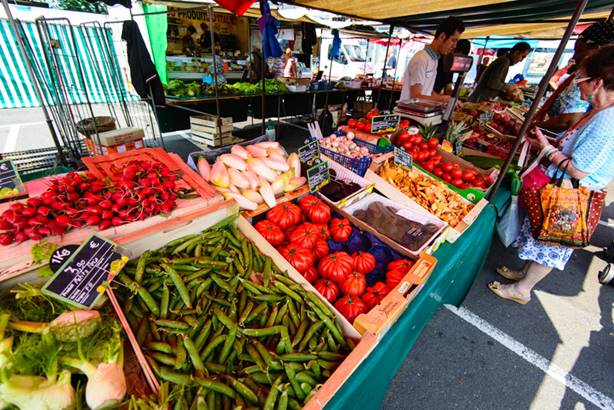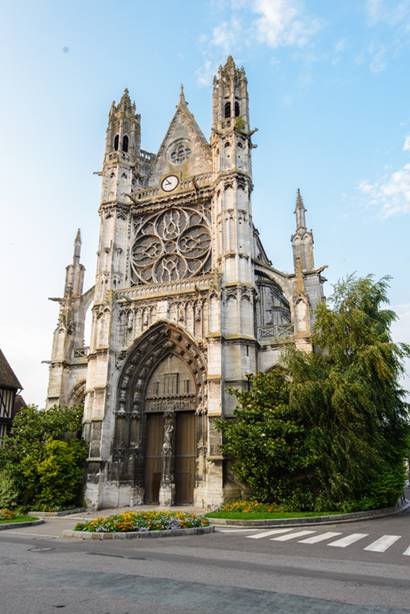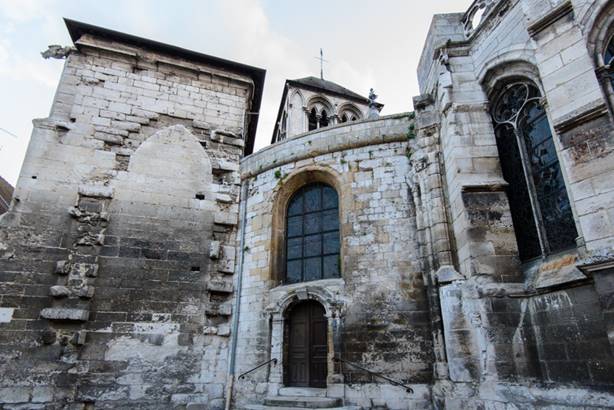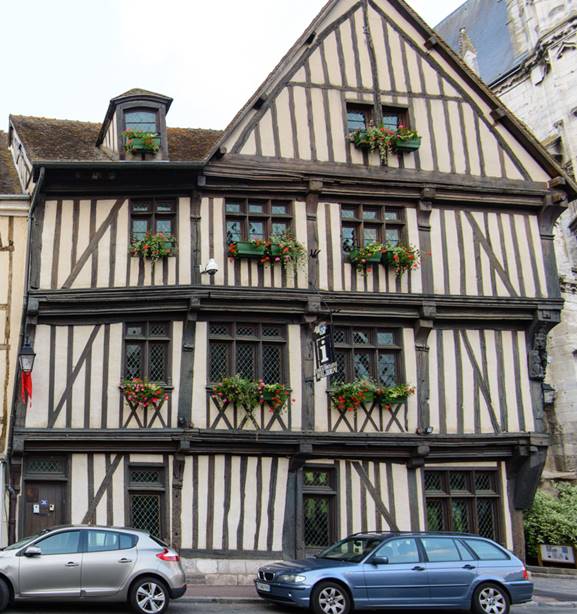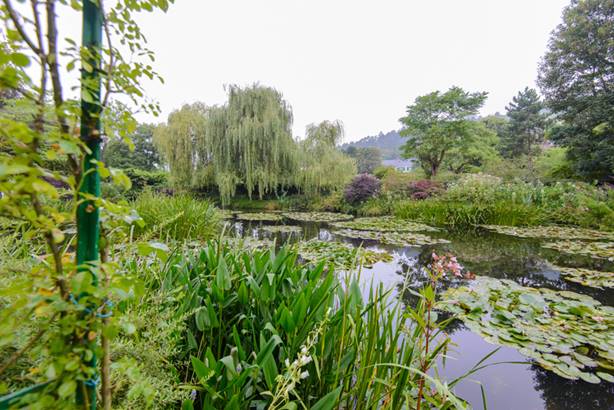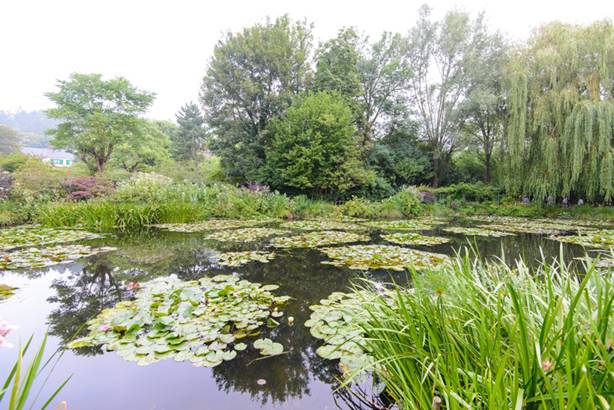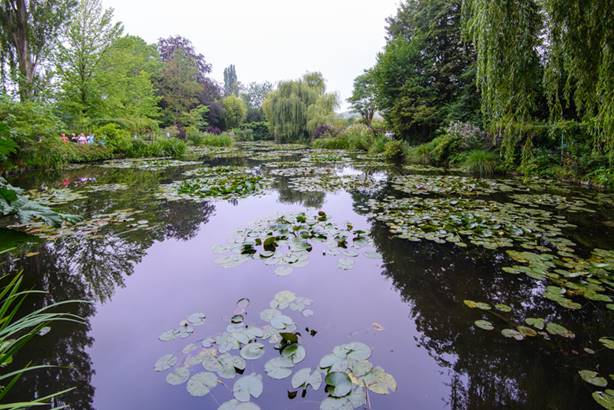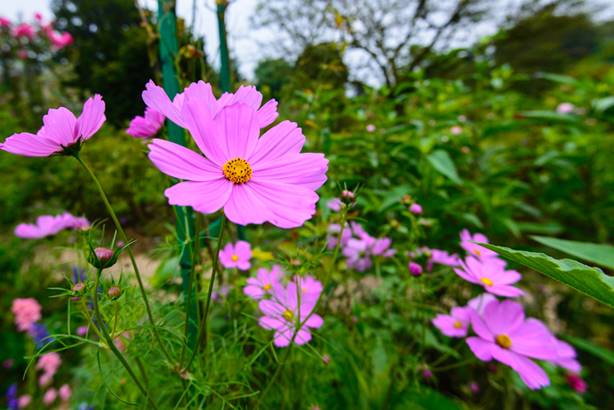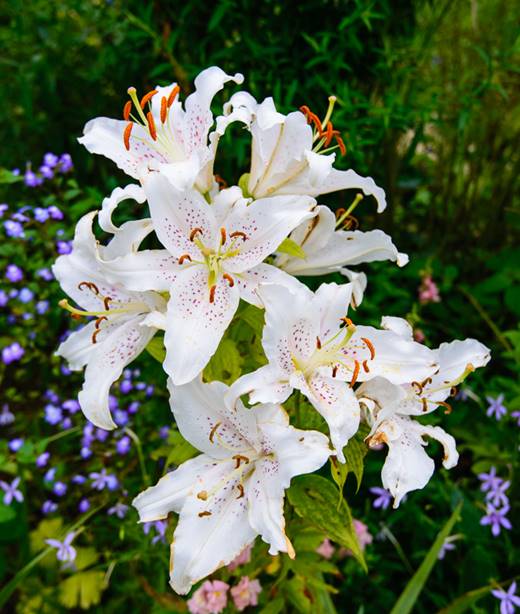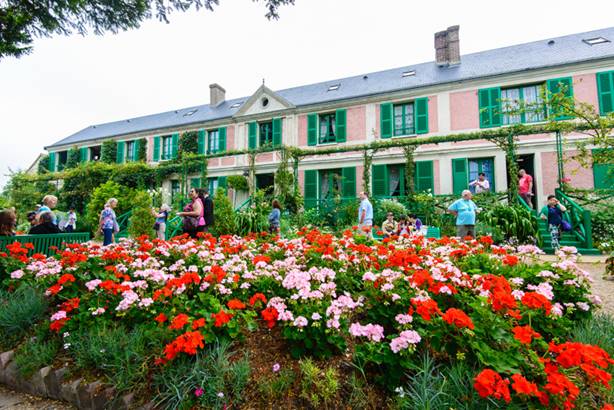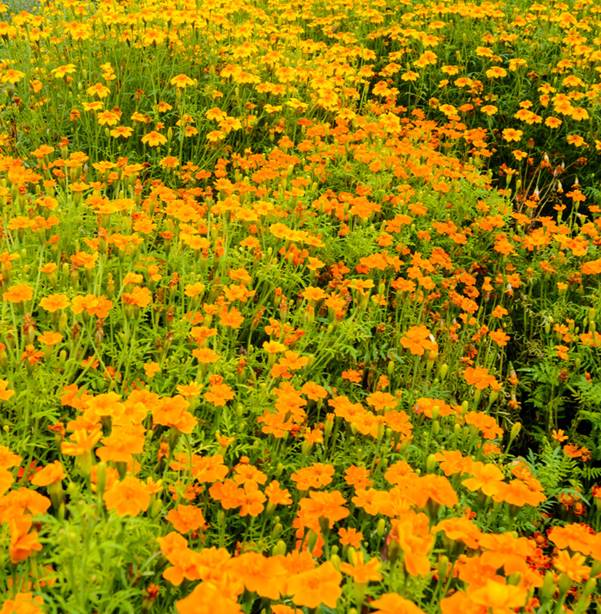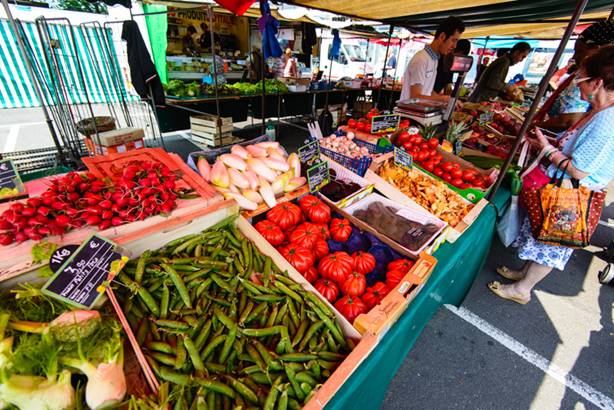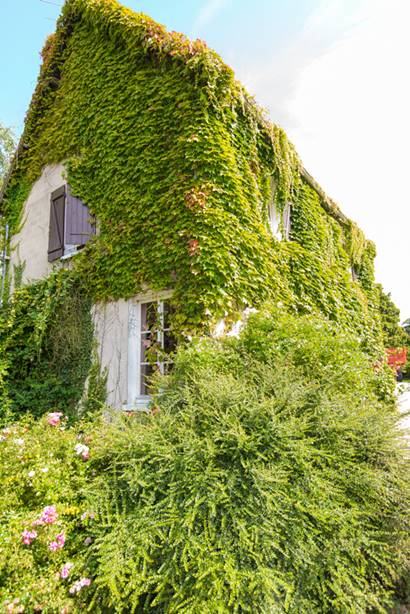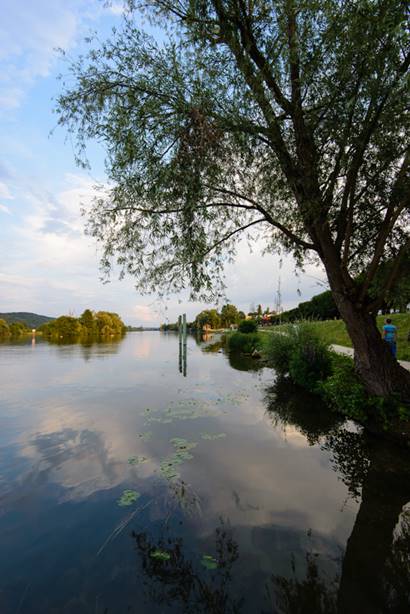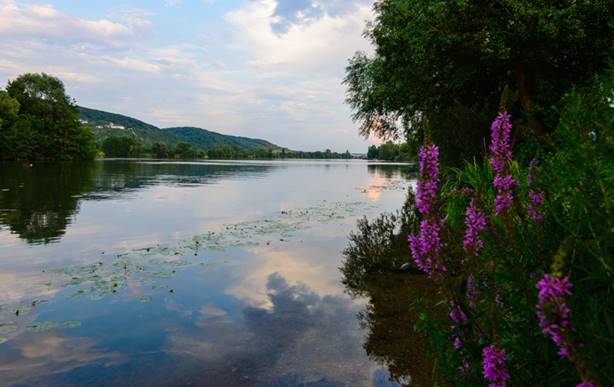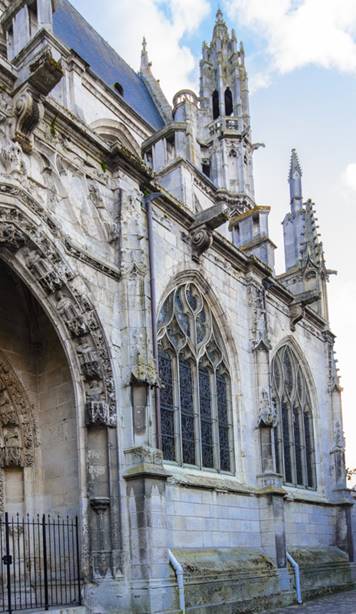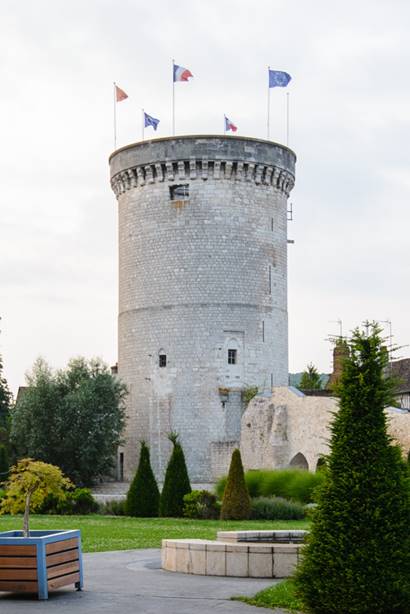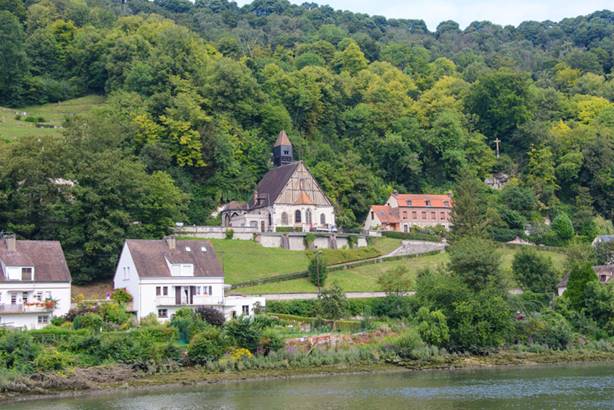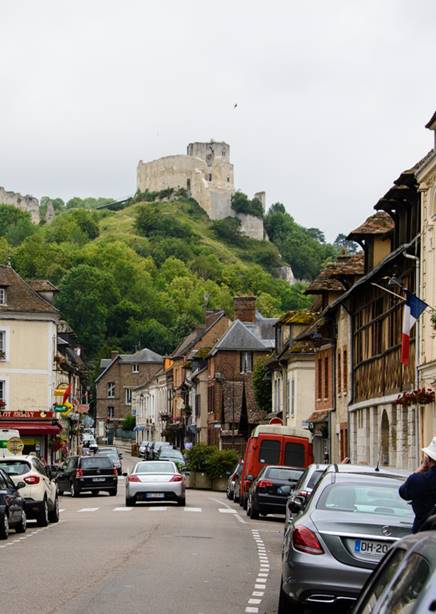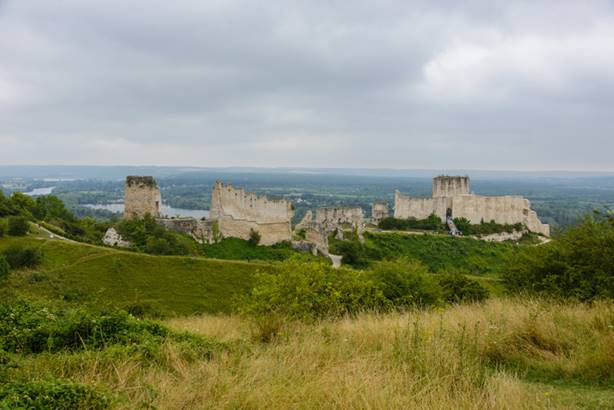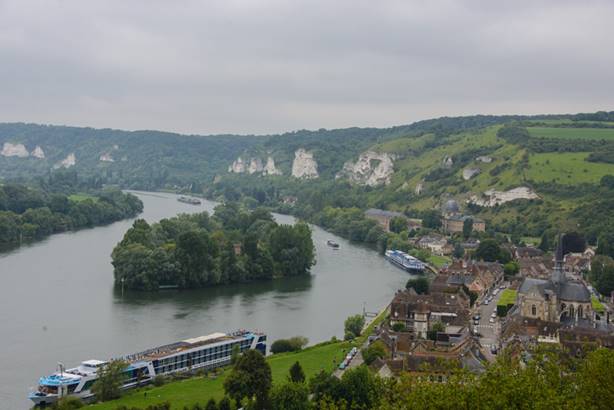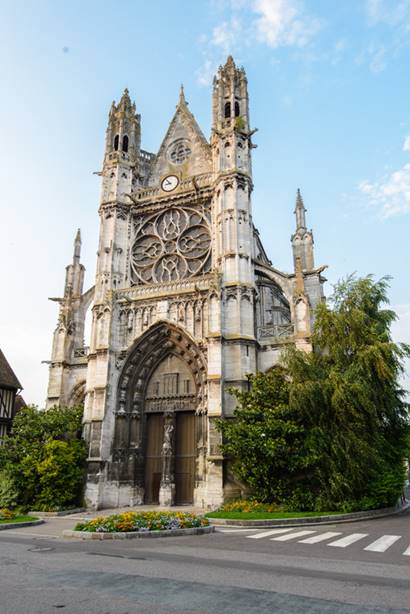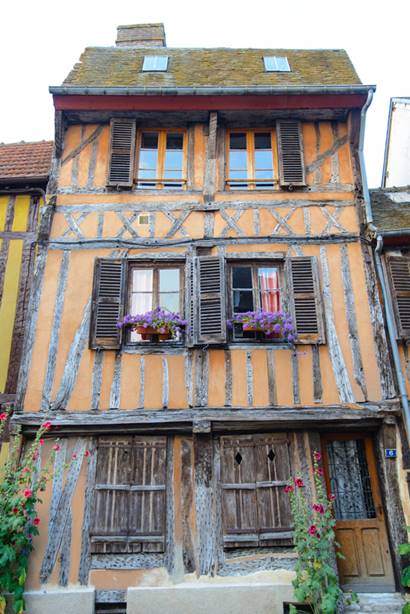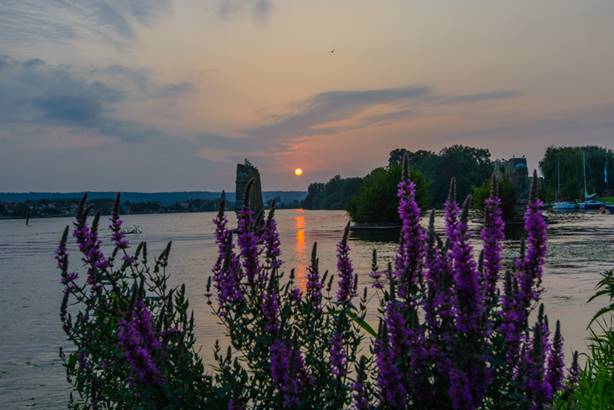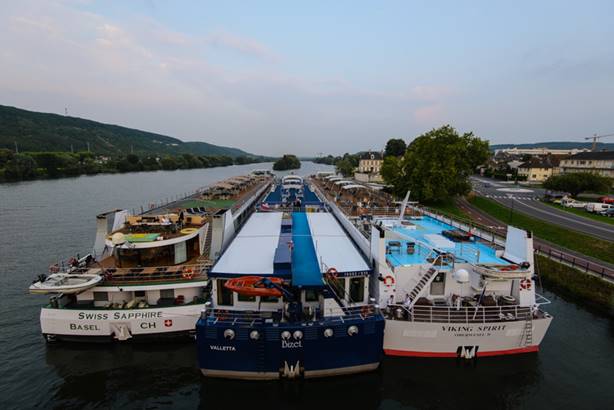After doing some packing, we only wandered as far as the corner for dinner at the café Le France. The food was adequate but not spectacular. Janet and I had the salade niçoise which not only had the customary tuna but other fish and shrimp as well. It was washed down with my favorite (so far) French beer Grimbergen La Rouge. After dinner we returned to finish up our packing.
Salade Niçoise with Grimbergen La Rouge.
We are some of the last departures. Our luggage must be outside our door by 9:30 and we depart for the airport at 10:00. Our flight wasn’t until 1:55 so this seemed to be plenty of time. Our driver was on time and Ken made certain that we had all of our luggage in the van and we said our good byes. Ken told us that someone would be at the airport to assist us in getting to the right place. BOY, did it turn out this was needed.
When we arrived things looked pretty normal at the curb. In just a couple of minutes our escort greeted us and we got our luggage loaded on a cart and headed inside the terminal. The chaos was immediate and intense. I don’t believe I have ever been is such a crowd. Queue lines were nonexistent, the entire terminal was wall to wall bodies. I asked our escort if this was normal and in the typically French way she said ”certainly not”. A local traveler overheard my question and also assured me that this was definitely not normal but no one knew what was going on. After several false starts trying to get into the correct “line”, we finally did get into a queue and was assured by our escort that this was the proper place to check our luggage (we had already printed our boarding pass). About an hour later we made it to the bag check counter. Despite the push, the counter clerk was very friendly and open to conversation. I asked about the crowd. It appears that some unattended luggage was found and the terminal was shut down for a couple of hours before we arrived. Everyone was evacuated and as a result everything was about two hours behind. Everyone who had to be evacuated had re-entered along with new arrivals like us.
After checking our luggage things went much smoother. Security wasn’t too difficult, in fact I wasn’t even detained despite all my electronics and camera equipment. Kay was pulled out of line for a body check (and she said it was the most through she had ever had at an airport). None of our group was asked to power up our electronics although we had been warned we would have to.
As we waited at our gate, the departure time began to be pushed back by 15 minutes intervals and finally persons with US passports were instructed to get into another line. Here our credentials were check and we were directed into a departure causeway so we thought we were on our way. With about 40-50 persons inside the line was suddenly closed. We remained in the causeway for about an hour with no chairs, water or WC. We couldn’t leave or we would have to go through the last security check again. After a delay of two hours we were finally led down the steps of the causeway to the tarmac where we boarded a bus for about a 10 minute ride to our aircraft a Boeing 747-400. Kay, Janet and I were seated in the upper deck and had ample room and wonderful service since there were only about 60 persons it was like being on a smaller plane. Carl was separated from the group in the lower level but had a choice seat near the exit door. David and Li were seated together and apparently had ample room as well. Air France’s service was exceptional with decent food and plenty of it. We were also offered wine, beer and spirits in addition to coffee, tea and soft drinks. The pilot was able to make up some time in the air and we arrived in Atlanta just a little after 7:00 PM about 2.5 hours late.
The new international terminal made customs a breeze compared to what it used to be. Everyone except Carl and Janet were through in less than 15 minutes. Unfortunately they were randomly selected for a more through customs interview, but it took only about 10 minutes longer.
After claiming our luggage, I called Top Hat Limo service and our driver picked us up with about a 5 minute wait. Folks, this is the way to go. After being up the past 24 hours I would certainly not have wanted to drive home from the Atlanta Airport. The Limo service was well worth the cost (about $65 per couple).
SUMMARY:
We were gone a total of 50 days, visited 10 countries, several major European Capital cities including London, Paris, Amsterdam, Vienna, Budapest, Bucharest and Belgrade. In addition with the river cruise we had the opportunity to visit many smaller cities, towns and even villages.
The question always asked is “What did you like best?”
I can’t answer for the others and it will be hard to answer for myself but I will try. Every country and every city had something that was the “best”. I enjoyed the unusual places, I enjoyed the history, I enjoyed the food, and I personally enjoyed the huge variety of beers available. I enjoyed the monuments, the museums, and the cathedrals. But, if I have to name one thing, it would be the ability to meet and interact and gain just a little understanding of the people of the countries we visited.
Some of the things I remember most was getting to talk with one of the youngest (at the time) Freedom Fighters in the 1989 December Revolution in Romania. The revolution was to break free from communist rule.
Revolutions of 1989 occurred in several Warsaw Pact countries. The Romanian Revolution started in the city of Timișoara and soon spread throughout the country. It ultimately resulted in the violent overthrow and execution of longtime President of Romania Nicolae Ceaușescu, and the end of the Socialist Republic of Romania. It was the last ouster of a Communist regime in a Warsaw Pact country during the events of 1989, and the only one that forcibly overthrew the country’s government and resulted in the death of its leader as well as of many of the protesters. Talking to someone who was there, who was shot at and injured, who saw his friends killed. It makes you realize just what the cost of freedom can be.
I remember having a meal in a private home in Croatia. The meal was prepared by our hostess almost entirely from fruits and vegetables she and her husband grew on their small city lot. The food was delicious but we learned that during the Croatian War of Independence from the early to mid-1990’s they were exiled from their home for 7 years. When they were able to return it was in ruins. Their photo album was a grim reminder that war is hell. It was remarkable that aside from a few buildings which had not been restored, the town look perfectly normal now.
I remember visiting Courtroom 600 in Nuremberg where the Nazi war trials were held. That setting alone is a very moving experience. Then we found that one of our fellow travelers was actually at the trials as an army private stationed to film the proceedings. He was able to relate firsthand what it was like in late 1940’s during those trials.
I remember visiting the Peace Museum in Caen France and the Beaches of Normandy, walking on Omaha Beach, and the American Military Cemetery. There are no words which can express the feelings these places evoke.
I remember a talk presented by Mr. Albert Heintz, a 90+ year old gentleman who was a member of the French Resistance during WWII. Again, firsthand accounts of what it was like to BE THERE.
I remember looking at a tomb stone in the Cimetiere Montparnasse in Paris of an entire family with the inscription “Assassinated in Auschwitz”
I count myself blessed. Blessed to be able to travel. Blessed to have had the opportunity to meet a few of the people who help shape the free world as we know it today. Blessed to have a better grasp of world affairs, not just from an American’s eyes but from an more global prospective. But most of all blessed to be an American and have the benefit of all of those who have sacrificed so that we might be free.
Least we ever forget that freedom always comes with a price we should remember John F. Kennedy’s quote “ The cost of freedom is always high, but Americans have always paid it. And one path we shall never choose, and that is the path of surrender, or submission.”
Well, I guess I better close this dissertation. I never meant for it to get so philosophical. I really have been moved by what I saw and learned and I have a reading list which should last me a couple of years at least. Hopefully you have enjoyed the photos if not the words of the past two months. But if you have made it this far with my musings, I will take the liberty to use Stephen King’s phrase and wish all my “Constant Readers” goodbye. Until next time…
Wendell

